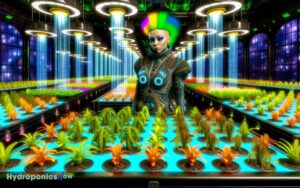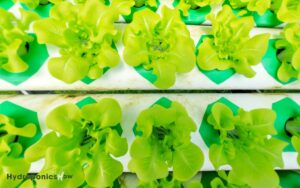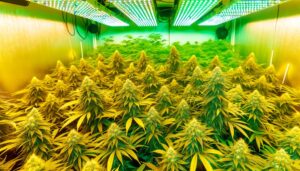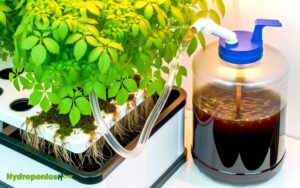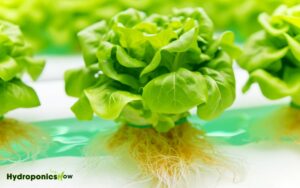Hydroponic Gardening 101 – Explore: Do Plants Need Fertilizer?
Hydroponic plants need fertilizers since they aren’t grown in soil, which naturally provides essential nutrients.
Nutrient-rich water solutions deliver crucial macronutrients, secondary macronutrients, and micronutrients directly to the roots, ensuring robust growth.
You should monitor and control pH levels and nutrient concentrations meticulously to optimize plant health. Liquid or dry fertilizers are used depending on your setup’s needs, but be cautious about mixing ratios and avoid over-fertilization.
With the right approach, you can achieve faster growth rates and higher yields. To understand application techniques and common pitfalls, there’s more to discover.
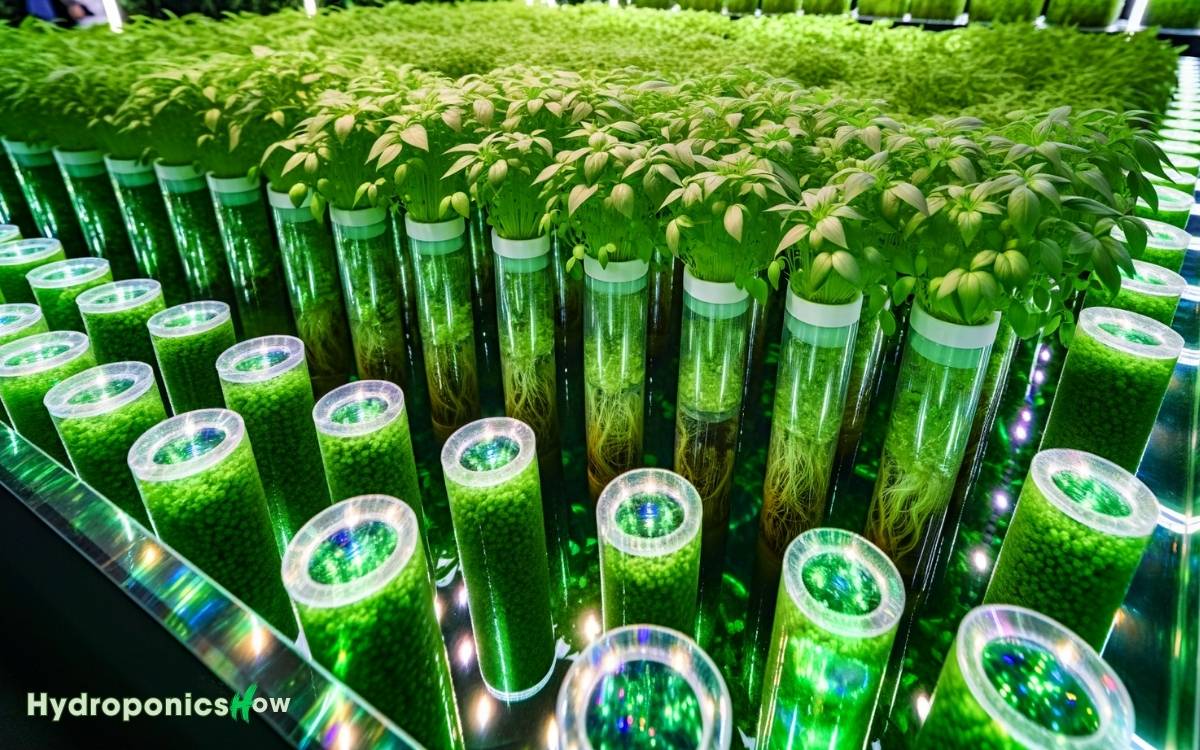
Key Takeaways
Understanding Hydroponic Systems
Hydroponic systems, which grow plants without soil, rely on nutrient-rich water solutions to deliver essential minerals directly to the plant roots. This method allows for faster plant growth and higher yields compared to traditional soil-based farming. By eliminating the need for soil, hydroponic systems reduce the risk of soil-borne diseases and pests. Understanding how hydroponic plants get nutrients helps growers optimize water composition to ensure healthy and efficient plant development.
You’ll find that these systems bypass traditional soil mediums, utilizing substrates like rock wool, clay pellets, or coco coir for root support instead.
The direct delivery method guarantees plants receive nutrients more efficiently, often resulting in faster growth rates.
Studies show that hydroponics can use up to 90% less water compared to conventional soil-based methods.
The system’s precision allows you to control pH levels and nutrient concentrations meticulously, optimizing the growing environment.
Essential Nutrients for Plants
Plants require a balanced mix of macronutrients and micronutrients to thrive, and understanding these essential elements is essential for optimizing your hydroponic system.
Macronutrients, including nitrogen (N), phosphorus (P), and potassium (K), form the backbone of plant growth, contributing to cellular function, energy transfer, and overall development.
Secondary macronutrients like calcium (Ca), magnesium (Mg), and sulfur (S) are equally important, enhancing structural integrity and metabolic processes.
Meanwhile, micronutrients iron (Fe), manganese (Mn), zinc (Zn), copper (Cu), molybdenum (Mo), boron (B), and chlorine (Cl) though required in smaller quantities, are indispensable for enzyme function and chlorophyll synthesis.
Monitoring and adjusting these nutrient levels ensures your plants receive a well-rounded diet, promoting robust growth and maximizing yield in a hydroponic setup.
Types of Hydroponic Fertilizers
When choosing hydroponic fertilizers, it’s essential to comprehend the differences between liquid and dry formulations to guarantee ideal nutrient delivery and plant health.
Liquid fertilizers offer ease of use, as they dissolve readily in water, ensuring uniform nutrient distribution. They’re ideal for automated systems but can be costlier.
Dry fertilizers, on the other hand, are typically more economical and have a longer shelf life. They require precise mixing to avoid nutrient imbalances, making them suitable for more experienced growers.
Additionally, look for formulations specifically designed for hydroponics, as they’re tailored to the unique needs of soilless systems.
Understanding these distinctions helps you select the right fertilizer type, optimizing your hydroponic setup’s efficiency and plant growth.
How to Apply Fertilizers
To guarantee peak nutrient uptake in your hydroponic system, apply fertilizers by first calculating the precise concentrations required for your specific plant varieties and growth stages.
- Use a calibrated EC (electrical conductivity) meter to measure nutrient solution strength, making sure it aligns with recommended levels.
- Mix your fertilizers in distilled water, maintaining a balanced pH between 5.5 and 6.5, essential for nutrient absorption.
- Regularly monitor and adjust the solution, replenishing nutrients as plants consume them.
- Implement a feeding schedule tailored to each growth phase, from seedling to flowering.
- Consistent monitoring prevents nutrient imbalances and optimizes plant health.
Employing these precise methods ensures your hydroponic plants receive the exact nutrients needed for robust growth and high yield.
Common Mistakes to Avoid
Even with meticulous attention to nutrient application, growers often encounter pitfalls that can hinder the success of their hydroponic systems.
Over-fertilization is a common mistake; it leads to nutrient burn and stunted growth. Monitor your electrical conductivity (EC) levels closely to avoid this.
Conversely, under-fertilization results in nutrient deficiencies, causing yellowing leaves and poor yields. Regularly check pH levels, as imbalances can lock out essential nutrients.
Another frequent error is neglecting reservoir maintenance; algae growth and sediment buildup can disrupt nutrient delivery. Consistent cleaning and monitoring are essential.
Conclusion
Just like a car needs fuel, hydroponic plants require the right fertilizers to thrive.
Understanding your hydroponic system and essential plant nutrients guarantees you choose the best fertilizer type.
Applying it correctly and avoiding common mistakes will lead to bountiful growth.
By being analytical and evidence-based in your approach, you’ll maximize plant health and yield, turning your hydroponic endeavor into a successful and rewarding venture.

